Migrating from your current community forum software to any provider is exciting. And while a migration presents the opportunity to improve your community, build and customize features that your members want and create new programs to engage your members, it’s often a stressful time for community managers and their teams.
In my career, I have been part of many migrations, and below I want to share four things you can do now to help you before your migration.
Manage the Change Process
Just because you and your community team are excited about the migration doesn’t mean everyone else is. Change can be tricky for many organizations, so you want to make sure that everyone who plays a role in the success of your community understands the difference that the community is about to undergo and the benefits it’ll bring.
According to a McKinsey study, 70% of change programs fail to achieve their goals due to employee resistance and lack of management support. That being said, to prepare for your migration, you want to assess your current community goals, determine if/ how they should be adjusted and meet with all internal stakeholders to explain your strategy and how your new provider will help you achieve these goals.
You should already have these answers, hopefully, as it’s the reason why you’re migrating in the first place. Use these notes to explain your decision and future community plans to ensure your staff (and executives!) understand the process. Answer questions and get them involved—this will help them get as excited about the change as you are.
Ultimately, the best way for your organization to embrace this new change is to maintain open and transparent communication and involve all internal stakeholders. Change can be pretty easy to manage if you know what you’re doing, but failing to address change correctly can be detrimental.
Keep Your Community in the Loop
This is something that I can’t stress enough and is one of the biggest mistakes you can make when undergoing a migration. Many organizations make this mistake, and the consequences are dire—keeping your members in the dark and surprising them at the last minute (or even worse, when they log in and everything is different) is not the way to manage a migration process.
From the moment you sign the dotted line and know that your community will be migrating to a new platform, tell your members. Making a community announcement about your migration plans, its impact on your members, and what this means for the community as a whole is a great start. But as you learn the step-by-step process that your migration will take, it’s always good to provide periodic updates to your original announcement.
Another thing you can (and should!) do is meet with your Super Users and give them all the information they need to help you address any community questions or concerns. Once you make a public announcement about your upcoming migration, you’re sure to have a bunch of questions headed your way. Sharing everything you know with your top members will help you deal with the influx of questions you’re likely to receive—which will significantly help you.
Additionally, by keeping your members in the loop, you can collect ideas and feedback on what your members want to see in the new community. Perhaps they have some great suggestions for your gamification system or want to see specific changes made to Categories. Keeping communication open will not only allow you to get great ideas, but it will also help hype up the excitement for the new community—which is VERY important.
Have a Soft Launch
A soft launch should always be part of your migration strategy. There are a ton of different ways that you can tackle this. Different communities approach their soft launch in various ways, and you have to do what’s right for you. I would start thinking about timelines and process once you know you will be migrating.
One of the biggest reasons why a soft launch is a must is because the feedback is invaluable. We talked a bit about the value of the input in the point above, but the soft launch gives your members a chance to “demo” the community and see if all is working as it should. Getting this feedback before you officially go live is one of the most important things you can do to ensure that your community sees success!
When planning your soft launch, consider who to invite to participate. Many communities ask their Super Users and Moderators to look around since these people are invested in your brand and are in an excellent position to judge the experience.
Generally speaking, most soft launch strategies look to gather feedback on several important factors, including:
- The style/ theming of your community – is it on brand and appealing to viewers?
- The user interface – is it easy for members to navigate your community?
- New member onboarding – does the community make it easy for newcomers to understand the community rules, the purpose and how to participate?
- Creating new discussions – is it easy for newcomers to understand how to create a further conversation?
- Is the ideation system working as intended, and is it easy to use?
- The gamification system – is your community gamification system easy to understand, on brand and fun to use?
Of course, this list is non-exhaustive, and there may be many different things you want to test out. The main goal is to catch any obvious mistakes or barriers to folks participating. You can constantly iterate.
Reassess Community Behaviours
A new community allows you to start with a clean slate. While all your data and information will be imported exactly as you wish, you also have the opportunity to reassess member behaviours and attitudes and make any adjustments.
Think of it as moving into a new house. It’s a new shell, but all the furnishings from your old house are in your new place. But of course, a new home is a great reason to finally get that couch that you’ve had your eye on.
In short, a new community is a great reason to look at your community’s situational playback and procedures. For example, how did you previously handle things like trolls, spam, or promotional content? What can the new platform do for you, and are there any new strategies you want to write down? It’s also a great time to revise and refresh the community rules and guidelines. Maybe add or remove things – or make them more fun – if you spot any flaws – this is the perfect time ta change. Finally, take a moment to think about what your community goals are and what types of member behaviours will help you get there.
I know this list is not endless, but I wish you all the best on your move! Onwards to success!
—–
Article by Adrian Speyer – Vice President of Marketing & Community at Community Leaders Institute, and Author of The Accidental Community Manager

